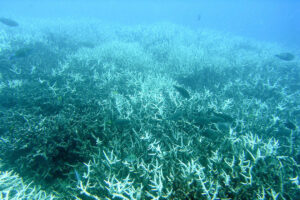PHL economy likely to bounce back in 2024

By Keisha B. Ta-asan, Reporter
PHILIPPINE economic growth is expected to return to above 6% in 2024 as the impact of elevated inflation and high borrowing costs likely eases, analysts said.
“As the impact of inflation and rates dissipates next year, growth will likely return to above 6% in the medium term, still buoyed by strong underlying domestic demand and favorable demographics,” S&P Global Ratings Senior Economist Vincent Conti said in an e-mail.
S&P Global Ratings raised its 2024 GDP projection to 6.1% from 5.9% previously. However, this is still short of the government’s 6.5-8% target for 2024.
Economic growth may be stronger in 2024 due to a better outlook for inflation and monetary policy, University of Asia and the Pacific Senior Economist Cid L. Terosa said in an e-mail.
“I expect inflation to be within the 3.5% to 4% range next year. As inflation becomes tamer, we expect monetary easing to follow suit,” Mr. Terosa said.
The Bangko Sentral ng Pilipinas (BSP) last week raised its 2024 inflation forecast to 3.5% from 3.3% previously. Still, this is within the central bank’s 2-4% target range.
“Economic growth next year will be driven by better prices, business, and investor environments. I am optimistic that the Philippines can achieve at least 6% growth next year. The odds of achieving a 6.6-8% growth rate next year appear to be moderately high,” he said.
For this year, Mr. Terosa said it would be hard for the Philippines to achieve its 6-7% growth target. He expects GDP to grow by 5-5.7% this year.
“With a lower than 6% growth rate this year, the Philippines may not be able to achieve high middle-income status in the next two years. We need to grow by 6% for two to three consecutive years to have a clear shot at high middle-income status,” he said.
The government is targeting to reach upper middle-income status by 2025. The Philippines is currently classified as a lower middle-income country with a gross national income per capita at $3,950 in 2022.
S&P Global Ratings had also slashed its Philippine GDP forecast to just 5.2% this year, slower than the 5.9% forecast given in June. This after GDP expanded by 4.3% in the second quarter, its slowest growth in two years.
“We see this as a reflection of the simultaneous impact on household wealth and disposable incomes from the maturation of post-pandemic dissaving coupled with high inflation and the resulting rate hikes,” Mr. Conti said.
The BSP’s Monetary Board hiked borrowing costs by 425 basis points (bps) from May 2022 to March 2023. It opted to leave interest rates unchanged for a fourth straight time last week.
“These were also happening at the same time as fiscal consolidation, and together, these weigh on private investor sentiments,” Mr. Conti said.
Meanwhile, Philippine Exporters Confederation, Inc. President Sergio R. Ortiz-Luis, Jr. said it may be hard for the Philippines to meet its 2023 and 2024 growth targets amid dampened investor sentiment.
In a phone interview, Mr. Ortiz-Luis said aside from elevated inflation and uncertainties in food and fuel prices, investors are concerned with higher-than-expected wage increases.
“The Senate is still threatening to pass the P150 minimum wage increase by December. So, our investors, even the local ones, adopted a wait-and-see approach,” he said in mixed English and Filipino.
In March, Senate President Juan Miguel F. Zubiri filed a bill seeking to increase the minimum wage for all daily wage earners by P150.
Finance Secretary Benjamin E. Diokno and National Economic and Development Authority Secretary Arsenio M. Balisacan have warned against the proposed wage hike as this may stoke inflation.
Mr. Ortiz-Luis also cited the government’s suspension of 22 reclamation projects in Manila Bay earlier in August. All projects are under review for their environmental and social impact.
He noted that a lot of investors have decided to look for partners in Vietnam and Taiwan instead of the Philippines.




